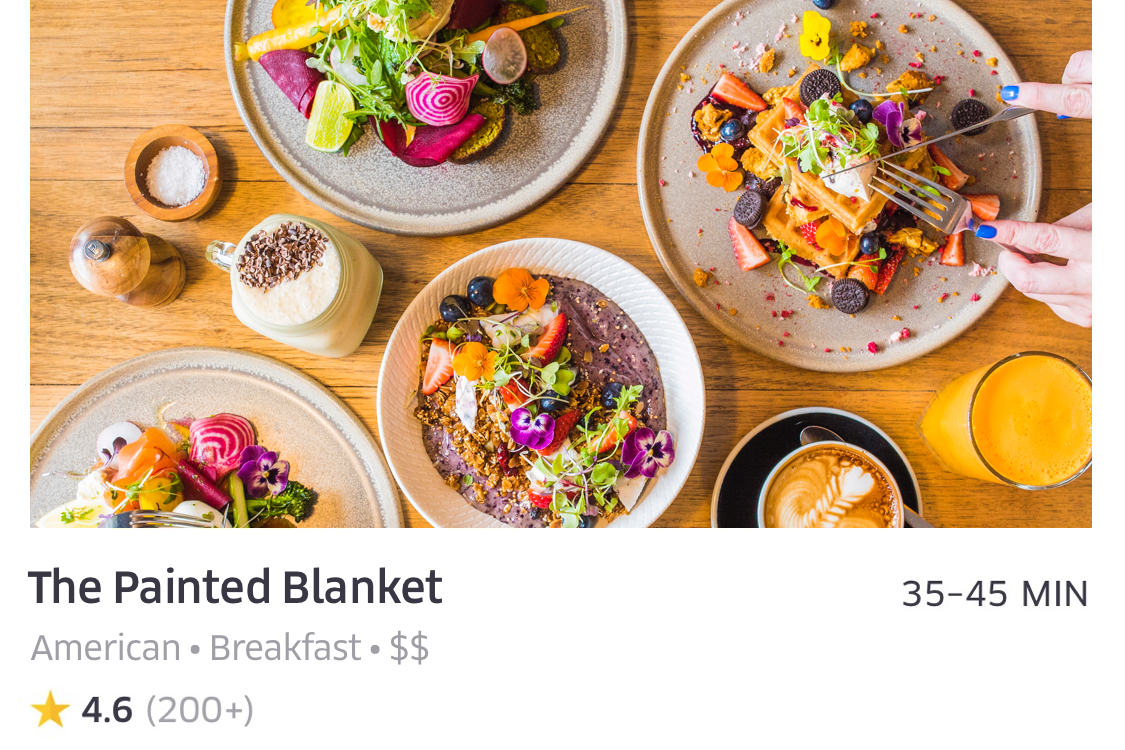Uber Eats Bets on Personalization for a Delivery Edge

Photo Caption: UberEats has added layers of personalization, including ratings, to its in-app experience.
Skift Take
The best food delivery app is the one that gets you the food you want exactly when you want it — especially when you want it now. With over 80,000 restaurants on its platform, UberEats has done well to inject personalized suggestions into its ordering and delivery experience.
Personalization is key to UberEats' strategy as delivery companies race to add more features and restaurant partners. The company has announced three new consumer-facing features within its mobile app, giving visibility into its plans for growth and success in the white-hot and competitive delivery market.
Two, in-app ratings and favorites, are arguably overdue, as we've come to expect that functionality from any restaurant recommendation or delivery service. The third, personalized menu options, is a little more unique and speaks to UberEats' larger plan of applying data and machine learning to enhance delivery.
UberEats product manager Ambika Krishnamachar explains that these new features are meant to help with the problem of choice, which she says is more than just providing information to the user. "With the growing selection of restaurants on the platform it's become challenging to show you what you want at any particular moment," she told Skift Table.
A September New York Times article noted "top executives believe UberEats could generate enormous growth." Last October, UberEats had just over 20,000 restaurants on its platform. That number is now over 80,000 in close to 200 cities, nearly doubling since April. UberEats has an exclusive partnership with McDonald's that will see roughly 10,000 of the fast food giant's restaurants available on UberEats by year's end.
Given the sheer volume of restaurant options, not to mention the speed at which UberEats has grown, a little help from artificial intelligence goes a long way in helping to surface what a diner actually wants. For context, Grubhub, UberEats' largest competitor, reported it now has 75,000 restaurants on its platform, though only in the U.S. and London.
Old Is New
Personalization has always been part of UberEats — essentially everything you see in the app is personalized, from lists and collections of restaurants to certain search elements. With new in-menu personalization, UberEats is taking the machine learning and recommendations a step further. "We've always tried to connect the user with the restaurant they're interested in, but once you choose the restaurant, you still have to choose the dishes. You're only halfway there," said Krishnamachar. In-menu recommendations aim to solve that problem, listing dishes UberEats deems those you're most likely to enjoy based on your taste profile.
This new feature has implications for restaurants, too, especially considering the data that UberEats provides to its restaurant customers. "Restaurants are now under less pressure to deliver a one-size-fits-all menu that need to work for everyone," she added. UberEats appears to be pushing restaurateurs toward a data-driven model of menu and concept creation. The company's efforts to encourage virtual restaurants based on perceived gaps in local markets, for example, have helped more than a few restaurants identify areas in which they might fill a local need and make additional revenue.
In this vein, restaurants can now essentially give tailored, personalized menus to UberEats users by simply offering a huge menu, listing specific combinations or customization options. A menu of 100 items becomes far less annoying when the app displays the five things the diner actually wants, front and center.
The new features launch today for all of UberEats' 80,000 restaurants worldwide.

The travel industry's top event returns this fall.
September 16-18, 2025 - NEW YORK CITY
